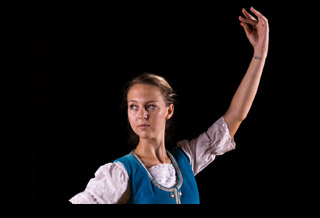Highland
Highland Dancing is one of the oldest forms of folk dance. It dates as far back as the 11th and 12th century. Competitive Highland Dancing stared in the Highland revival of Victorian Britain and was for men only Ladies only began competing at the turn of the 20th Century.
Highland Fling
Likely the oldest of the traditional dances of Scotland, the Highland Fling signifies victory following a battle. The warriors made this dance a feat of strength and agility by dancing on their upturned shields which had a sharp spike of steel projecting from the centre. The upraised arms and hands in the dance represent the deer's antlers.
Sword Dance (Gillie Callum)
Legend has it that the initial Sword Dance was created by Malcolm Canmore, a Celtic Prince who fought a battle in 1054. Triumphant, he crossed his opponent's sword with his own and danced over them celebrating his victory. It is also said that the warriors danced the Sword Dance prior to battle- touching the swords was a bad omen.
Seann Triubhas (Old Trousers)
This dance originated as a political protest dating back to 1745 when the wearing of the kilt was an act of treason. Pronounced "shawn trews", this Gaelic phrase means "old trousers". The beautiful, graceful steps reflect the restrictions imposed by the foreign trousers.
The Reels
The Reel O'Tulloch is said to have started in a churchyard on a cold winter morning when the minister was late for his service. The parishioners tried to keep warm by stamping their feet, clapping their hands and swinging each other by the arms.
And Scottish National Dances
The National Dances are more modern than the Highland Dances and were developed so women could participate, wearing the Aboyne outfit, which is a skirt instead of a kilt. The National Dances are much more rhythmic and balletic; however, they still require quick and precise movements. Men, of course, also perform all of the dances, but they wear the traditional kilt.




